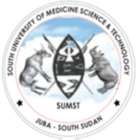Lower Back Musculoskeletal Hydatid Cyst: A Rare Presentation in a South Sudanese Patient
18 August, 2022 2023-12-19 17:32Lower Back Musculoskeletal Hydatid Cyst: A Rare Presentation in a South Sudanese Patient
Lower Back Musculoskeletal Hydatid Cyst: A Rare Presentation in a South Sudanese Patient
http://www.southsudanmedicaljournal.com/archive/august-2022/lower-back-musculoskeletal-hydatid-cyst-a-rare-presentation-in-a-south-sudanese-patient.html
Abstract: Echinococcosis, specifically hydatidosis, remains a significant public health concern in endemic regions, including South Sudan. While commonly affecting the liver and lungs, musculoskeletal involvement is rare. We present the case of a 75-year-old female who presented to Kapoeta State Hospital with a painless mass on her lower back, gradually increasing in size over three years. Clinical examination revealed a soft, non-tender, lobulated mass above the gluteal region, initially diagnosed as a lipoma. In the absence of imaging resources, surgery was performed, uncovering a hydatid cyst successfully removed without complications. The patient was discharged with a 28-day course of oral albendazole. Follow-up at six months showed no recurrence or complaints. This case emphasizes the importance of considering hydatid cysts in the differential diagnosis of cystic swellings, especially in endemic areas, and highlights the need for careful surgical excision.
Keywords: Echinococcosis, lump, excision, hydatid cyst.
Introduction: Cystic echinococcosis, or hydatidosis, poses a considerable public health threat in regions endemic to Echinococcus granulosus. While commonly affecting the liver and lungs, musculoskeletal involvement is infrequent, constituting 0.7-3% to 7.2% of cases. Ingestion of eggs passed by dogs, sheep, and other animals leads to the development of cysts in various organs, including the musculoskeletal system. Our case report underscores the importance of considering hydatid disease, particularly in endemic areas, and the necessity for meticulous surgical excision.
Case Presentation: A 75-year-old female presented to Kapoeta State Hospital with a three-year history of a painless mass on her lower back. The mass, initially small, gradually increased in size without associated trauma, pain, or fever. Clinical examination revealed an 8cm x 5cm soft, non-tender, lobulated mass above the gluteal region with intact skin. Due to the unavailability of imaging investigations, a provisional diagnosis of lipoma was made. Surgery under general anesthesia was planned, and a complete blood count returned normal results. Intraoperatively, a hydatid cyst was discovered, and careful dissection and removal were performed. The patient experienced no postoperative complications and was discharged with a 28-day course of oral albendazole. Follow-up at six months revealed no recurrence or complaints.
Conclusion: This case report highlights the rarity of musculoskeletal hydatid cysts and the importance of considering them in the differential diagnosis of cystic swellings, particularly in endemic areas. Meticulous surgical excision, even in the absence of advanced imaging, is crucial for successful management. Additionally, health education initiatives in low-resource settings can contribute to early detection and prevention efforts.
Citation: Kuju, L. S. N., Sube, K. L., Tongun, J. B., & Lako, J. D. (2022). Lower back musculoskeletal hydatid cyst: a rare presentation in a South Sudanese patient. South Sudan Medical Journal, 15(3), 110-113. doi: https://dx.doi.org/10.4314/ssmj.v15i3.7
